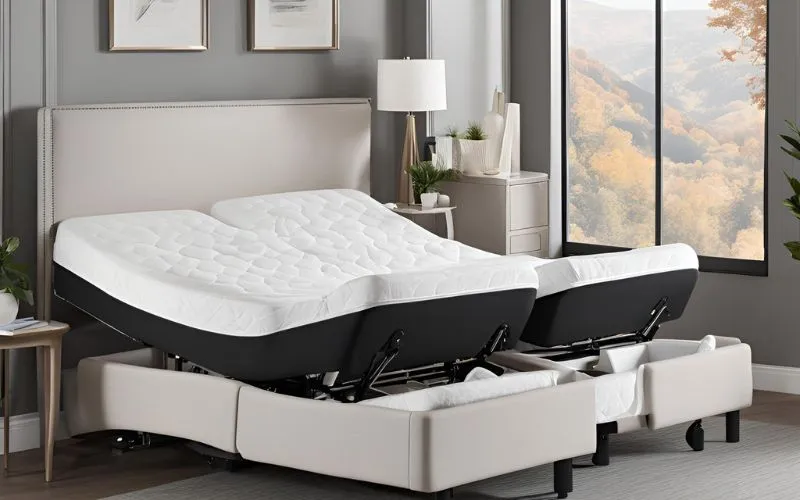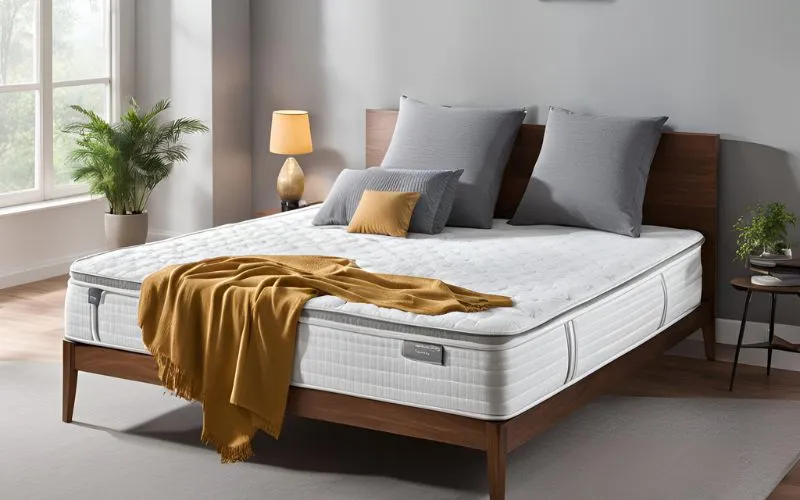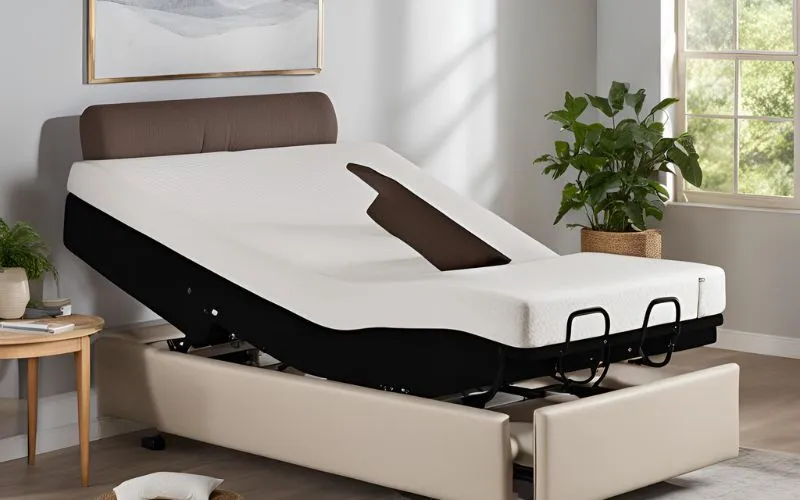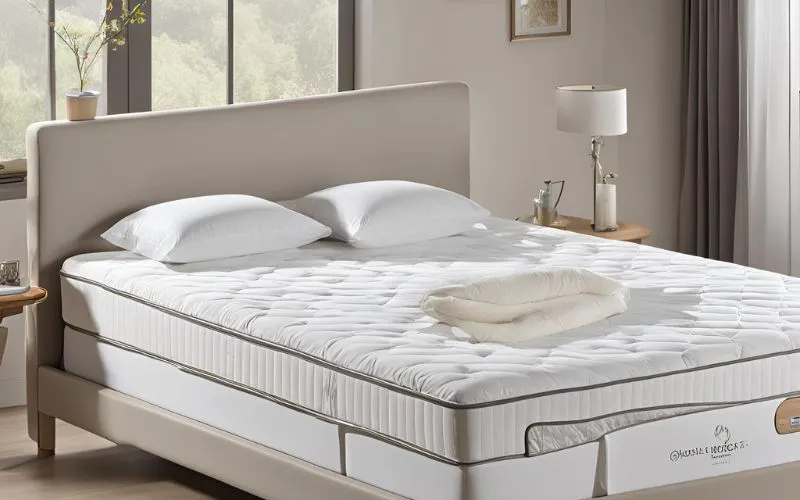Integrating Sensory Features Into Adjustable Beds for Special Needs

Introduction
Welcome to our in-depth exploration of integrating sensory features into adjustable beds for special needs individuals. In this comprehensive article, we will delve into the significance of sensory features and their impact on individuals with special needs. Through detailed analysis and insightful examples, we aim to provide valuable guidance for caregivers, healthcare providers, and individuals seeking to enhance the quality of life for those with special needs.
Special needs individuals require customized care and environments, and the integration of sensory features into adjustable beds holds immense potential for meeting their unique requirements.
Let’s embark on this informative journey to understand the importance of sensory features in the context of adjustable beds designed for special needs individuals.
Understanding Special Needs and Sensory Features
What Are Special Needs?
Special needs refer to the requirements and challenges faced by individuals with physical, mental, emotional, or developmental conditions that require specialized support and accommodations. These needs can manifest in various forms, ranging from mobility impairments to sensory processing difficulties, communication barriers, and more.
- Physical special needs may include mobility impairments, chronic health conditions, and physical disabilities.
- Mental and emotional special needs could involve conditions such as anxiety disorders, depression, and autism spectrum disorders.
- Developmental special needs cover a wide range, including learning disabilities, intellectual disabilities, and attention-deficit/hyperactivity disorder (ADHD).
Understanding and addressing these diverse needs is crucial in creating an inclusive and supportive environment for individuals with special needs. It involves tailoring educational, healthcare, and social systems to ensure equal access and opportunities for all.
The Importance of Sensory Features for Special Needs
Sensory features play a pivotal role in supporting individuals with special needs by creating environments that cater to their sensory sensitivities and comfort. For special needs individuals, sensory integration is essential for regulating emotions, enhancing focus, and promoting relaxation.
In our exploration, we will delve deeply into the specific sensory features that can be integrated into adjustable beds to provide tailored support for individuals with special needs.
Integrating Sensory Features into Adjustable Beds
Benefits of Adjustable Beds for Special Needs Individuals
Adjustable beds offer a range of benefits for individuals with special needs, including enhanced comfort, customized support, and optimal positioning to address specific mobility or therapeutic requirements. The integration of sensory features further elevates the benefits by creating a soothing and supportive sleep environment.
We will examine how adjustable beds with integrated sensory features positively impact the well-being of special needs individuals and contribute to improved sleep quality and overall comfort.
Innovative Sensory Features in Adjustable Beds
The advancement of technology has paved the way for innovative sensory features in adjustable beds designed for special needs individuals. These features may include tactile stimuli, auditory systems, visual elements, and smart technology integration to offer personalized control and therapeutic support.
Our discussion will showcase real-world examples and case studies highlighting successful implementations of sensory-integrated beds, emphasizing the compelling impact of these innovative features on individuals with special needs.
Choosing the Right Adjustable Bed for Special Needs
Factors to Consider When Selecting an Adjustable Bed
When choosing or designing an adjustable bed for special needs individuals, several critical factors must be carefully considered. These factors include safety, ease of use, compatibility with other therapeutic devices, and personalized customization to address unique sensory preferences and therapeutic needs.
We will provide valuable insights into the essential considerations that guide the selection of adjustable beds with integrated sensory features, ensuring a comprehensive understanding for caregivers and individuals seeking optimal solutions.
Customization Options for Sensory Features
When it comes to adjustable beds for special needs individuals, the customization options for sensory features play a crucial role in facilitating comfort, relaxation, and therapeutic benefits. Let’s delve into a detailed examination of the various customization options available:
- Adjustable Positioning: The ability to adjust the bed’s positioning is essential for catering to the specific comfort needs of special needs individuals. Whether it’s elevating the head, raising the foot section, or creating a zero-gravity position, the adjustable positioning feature provides personalized support.
- Sensory Stimulation Settings: Many adjustable beds offer sensory stimulation settings such as massage functions, heating elements, and soothing vibrations. These features are designed to promote relaxation, alleviate discomfort, and enhance overall well-being.
- Integrated Ambient Lighting:Incorporating ambient lighting within the bed frame can contribute to a calming and soothing sensory environment, especially during the nighttime hours. Soft, adjustable lighting can be beneficial for individuals with sensory sensitivities and can aid in creating a peaceful sleep environment.
- Noise Reduction Features: Some adjustable beds come equipped with noise reduction technology to minimize disruptive sounds, which can be beneficial for individuals with sensory processing challenges.
Furthermore, the versatility and adaptability of these customization options empower caregivers and individuals to create personalized sensory environments that cater to specific needs and preferences. By harnessing these features, individuals can experience enhanced comfort, relaxation, and improved overall well-being.
Tips for Using Adjustable Beds with Sensory Features
Maximizing Comfort and Support
In order to maximize comfort and provide optimal support for special needs individuals, effective utilization of adjustable beds with sensory features requires a comprehensive and thoughtful approach. This involves understanding not only the ergonomic adjustments, sensory settings, and personalization options, but also the specific needs and preferences of the individuals using the bed.
When it comes to maximizing comfort and support, the following factors play a crucial role:
- Bed Positioning: Finding the ideal position that offers the most comfort and support for the individual’s unique needs is essential. Whether it’s raising the head, elevating the legs, or adjusting the overall position, the right alignment can significantly enhance the comfort level.
- Pressure Relief: Adjustable beds with sensory features can provide targeted pressure relief by distributing body weight evenly and alleviating pressure points. This can be particularly beneficial for individuals with muscle stiffness or discomfort.
- Temperature Regulation: Some adjustable beds are equipped with features that allow for temperature control, ensuring that the sleeping environment remains comfortable and conducive to a good night’s rest.
- Personalization Options: The ability to personalize the settings, such as massage intensity, lumbar support, and firmness levels, can greatly enhance the overall comfort and support provided by the bed.
By addressing these key factors and tailoring the use of adjustable beds with integrated sensory features to the specific needs of the individual, caregivers and individuals can create an environment that truly optimizes comfort and support, ultimately leading to better quality of sleep and overall well-being.
Creating a Calming Bedtime Routine
A calming bedtime routine is vital for individuals with special needs as it sets the stage for a peaceful and restful sleep experience. By integrating specific sensory elements into the bedtime routine and leveraging the unique features of adjustable beds, it is possible to create a nurturing environment that promotes relaxation and prepares individuals for a night of rejuvenating sleep.
- Sensory Stimulation: Engaging the senses through calming sounds, gentle lighting, and comforting textures can soothe the mind and body, encouraging a sense of calmness and tranquility before sleep.
- Comforting Rituals: Establishing predictable and comforting rituals, such as listening to soothing music, reading a bedtime story, or practicing deep breathing exercises, can signal to the body that it is time to unwind and prepare for sleep.
- Temperature and Environment: Creating a comfortable sleep environment with the right temperature, adequate ventilation, and minimal distractions can significantly impact the quality of sleep for individuals with special needs.
When considering the design of a calming bedtime routine, it is imperative to understand the unique sensory needs of individuals with special needs and how these needs can be met through the use of adjustable beds with sensory features.
Adjustable beds with sensory features offer a range of options to enhance the calming bedtime routine for individuals with special needs. These features may include:
- Customizable Sensory Stimulation: The ability to personalize sensory elements such as vibrations, gentle movements, or adjustable lighting to suit the individual’s preferences and promote relaxation.
- Positional Support: The flexibility to adjust the bed’s position to achieve optimal comfort and support, addressing specific sensory needs and promoting a restful sleep experience.
- Therapeutic Benefits: The potential therapeutic benefits of adjustable beds, such as alleviating pressure points, promoting circulation, and facilitating a more comfortable and supportive sleep environment.
By incorporating these sensory features into the design of a calming bedtime routine, individuals with special needs can experience a more profound sense of comfort, relaxation, and readiness for sleep, ultimately contributing to improved overall well-being.
Conclusion
In concluding our exploration of integrating sensory features into adjustable beds for special needs, it becomes evident that sensory integration holds immense potential for enhancing the well-being and sleep quality of individuals with special needs. By addressing the unique sensory requirements through innovative features and personalized customization, adjustable beds emerge as transformative tools in providing tailored support and comfort.
We encourage caregivers, healthcare providers, and individuals to explore the evolving landscape of sensory-integrated beds, embrace technological advancements, and continue advancing the field to positively impact the lives of those with special needs.




